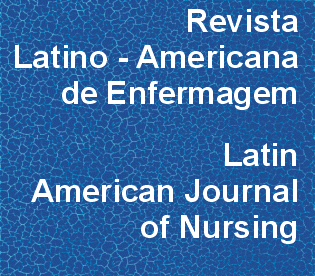Prediction of risk and incidence of dry eye in critical patients
DOI:
https://doi.org/10.1590/1518-8345.0897.2689Abstract
Objectives: to estimate the incidence of dry eye, to identify risk factors and to establish a risk prediction model for its development in adult patients admitted to the intensive care unit of a public hospital. Method: concurrent cohort, conducted between March and June, 2014, with 230 patients admitted to an intensive care unit. Data were analyzed by bivariate descriptive statistics, with multivariate survival analysis and Cox regression. Results: 53% out of 230 patients have developed dry eye, with onset mean time of 3.5 days. Independent variables that significantly and concurrently impacted the time for dry eye to occur were: O2 in room air, blinking more than five times per minute (lower risk factors) and presence of vascular disease (higher risk factor). Conclusion: dry eye is a common finding in patients admitted to adults intensive care units, and care for its prevention should be established.Downloads
Download data is not yet available.
Downloads
Published
2016-01-01
Issue
Section
Original Articles
License
RLAE’s authorship concept is based on the substantial contribution by each of the individuals listed as authors, mainly in terms of conceiving and planning the research project, collecting or analyzing and interpreting data, writing and critical review. Indication of authors’ names under the article title is limited to six. If more, authors are listed on the online submission form under Acknowledgements. The possibility of including more than six authors will only be examined on multicenter studies, considering the explanations presented by the authors.Including names of authors whose contribution does not fit into the above criteria cannot be justified. Those names can be included in the Acknowledgements section.
Authors are fully responsible for the concepts disseminated in their manuscripts, which do not necessarily reflect the editors’ and editorial board’s opinion.
How to Cite
Prediction of risk and incidence of dry eye in critical patients . (2016). Revista Latino-Americana De Enfermagem, 24, e2689-. https://doi.org/10.1590/1518-8345.0897.2689



